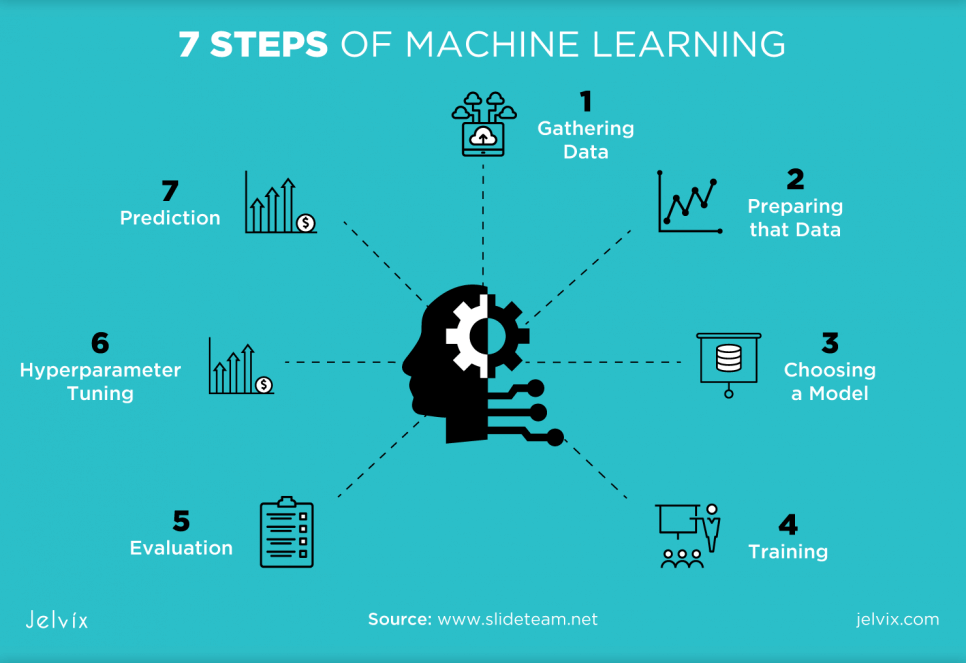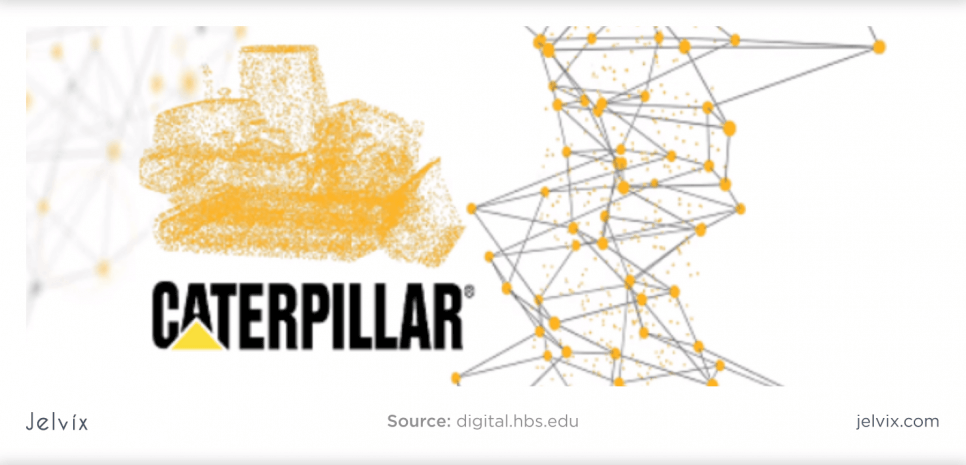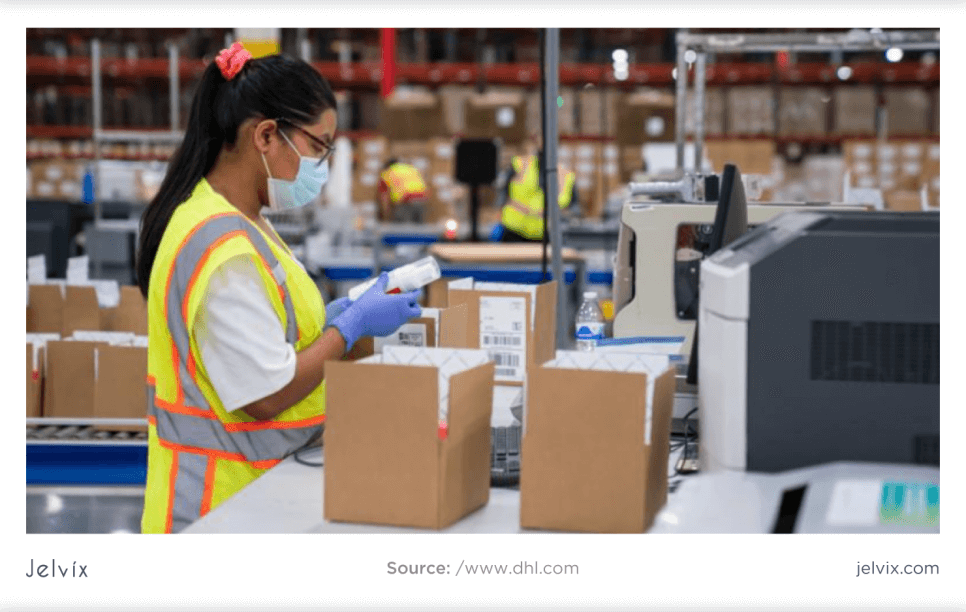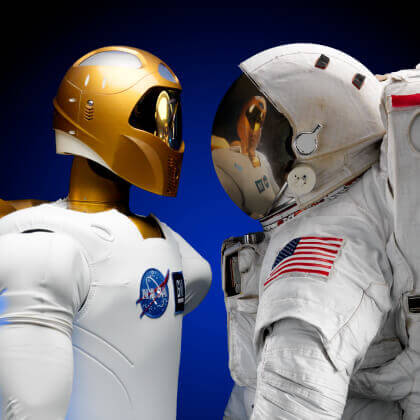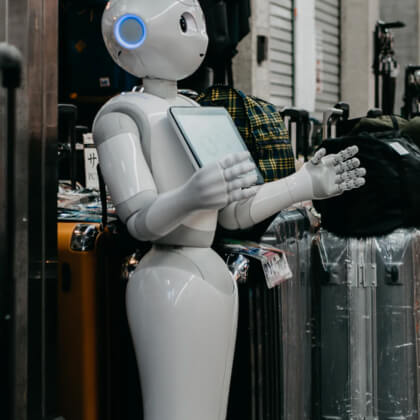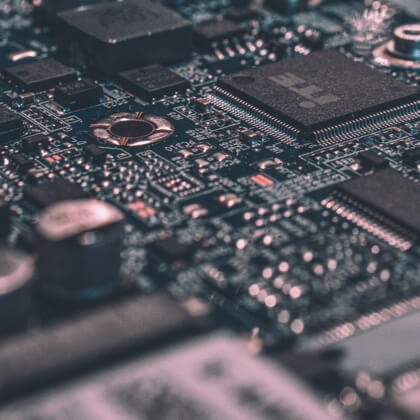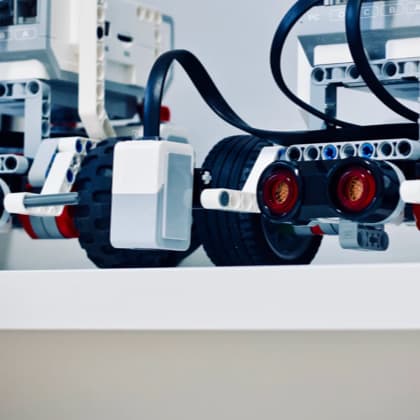Machine learning has caused significant changes in the business processes of many companies. And we are not just talking about futuristic products like Siri and Amazon Echo or companies that allocate considerable budgets to R&D programs like Google and Microsoft. In reality, almost any Fortune 500 company makes more money and works more efficiently because of machine learning.
What is Machine Learning (ML)?
Machine Learning (ML) is a data analysis technique that allows an analytic system to learn through the course of solving many similar problems. Machine learning is based on the idea that analytical systems can learn to identify patterns and make decisions with minimal human involvement.
Let’s imagine that there is a program that can analyze the past week’s weather as well as a thermometer, barometer, and anemometer readings to make a forecast. Ten years ago, they would have written an algorithm with lots of conditional (if) constructs to do this:
- If a strong wind is blowing, it will probably catch clouds.
- If there are clouds, it will be cloudy.
- If the temperature has dropped but is above zero, it will rain; if it is below zero, it will snow.
The programmer had to describe an incredible number of conditions so that the code could predict the change in the weather. At best, a multivariate analysis of the data was used, but all the regularities were specified manually, even in this case. And even if such a program was called artificial intelligence, it was only an imitation.
On the other hand, machine learning allows the program to build cause-and-effect relationships independently. The AI gets a task and learns how to solve it. The computer can analyze indicators over several months or even years to determine what factors have influenced weather changes.
Here’s another excellent example from Google’s DeepMind:
Google’s DeepMind taught a model how to walk. The program received information from virtual receptors, and its goal was to move the animated avatar from point A to point B. There were no instructions for this. The developers only created an algorithm that the program learned. As a result, it was able to complete the task on its own.
The AI, like a child, tried different methods to find the one that would best achieve the result. It also took the characteristics of the avatar’s physical models into account, making the four-legged one jump and the humanoid one run. The AI was also able to balance on moving slabs, go around obstacles, and navigate off-road.
What is Machine Learning Used for?
In the example above, walking was described. It will help humanity create trainable robots that can adapt to the tasks at hand. For example, putting out fires, clearing debris, mining, etc. Machine learning is much more effective than a regular program in these cases. A human could make a mistake while writing code. And this could cause the robot to go into a stupor because it doesn’t know how to interact with a rock of a shape that the developer didn’t prescribe.
Machine learning is widely used in data science. And a significant part of the time, those tasks are marketing.
Amazon uses AI with machine learning to offer users the product they are most likely to buy. For this purpose, the program analyzes the experiences of other users to apply to new users. But still, the system has its drawbacks; for example, once a user buys a hat, he or she will see offers to buy more. The program will conclude that a few hundred more won’t hurt since one hat was needed.
Google uses a similar system to select relevant ads, and it has the same problem. Just look for information about what kind of bikes there are, and Google will decide that the user wants to dive deep into this topic.
You could also work with voice assistants like Siri. They use speech recognition systems based on ML. In the future, they could replace secretaries and call center operators.
The applications of ML can be many different things. It can even help to create quantum-resistant blockchain in the future. And you can use it in your applications. But you will need to acquire, configure, and maintain a machine learning infrastructure.
Machine Learning in the Factory
Minimizing production downtime. Due to breakdowns, malfunctions, or raw material shortages, downtime can cost a factory millions of dollars. Machine learning can help prevent them. This is done by collecting data from sensors on the equipment and then seeing what metrics the failures occur at. In the future, this information can be used to predict when and why downtime will happen and how to avoid it.
For example, it could be that the temperature in a shop always rises before a machine breaks down. Then if the temperature increases, the system will alert the engineers, and they will prevent the problem in time.
To avoid downtime in mining operations, oil and gas equipment manufacturer GE Oil&Gas uses the Industrial Internet of Things and machine learning. The company’s platform collects data on oil production status and then schedules diagnostic checks and helps identify malfunctions before they happen. The same platform has helped Kuwait Oil Company increase gas production by 2-5%, and Malaysia’s Petronas oil company reduce maintenance costs by 10%.
Creating a production management system. With the help of sensors and machine learning, it is possible not only to perform narrow tasks (such as preventing breakdowns) but also to manage the entire production:
- Reduce the percentage of rejected parts: analyze why rejects occur and how to avoid them.
- Optimize individual steps so they take less time.
- Use less material for production and thus reduce costs.
- Monitor the condition of equipment and record its efficiency and workload.
- Automate individual production steps.
Microcontroller manufacturer Simatic uses an IoT and machine-learning-based platform. It helps collect and analyze information from sensors on equipment in real-time. It has helped to automate the production of thousands of products by 75%, increase production by 9 times with the same floor space and personnel, and reduce waste by almost 100%.
Identifying Security Threats. Machine learning helps make production safer: identifying minor changes in equipment performance and alerting in time about possible disasters.
For example, energy company Shell uses machine learning, neural networks, and IoT to identify safety threats and alert employees automatically. That way, they can react to a problem before a disaster strikes. Incidentally, Shell also uses machine learning to optimize production and mining operations.
Exploration of new fields. One of the main problems of the oil, gas, and mining industry is the difficulty in discovering new fields. Machine learning helps speed up this process. Based on the data from previous fields, artificial intelligence builds models that predict where to look for new gas or ore deposits with high accuracy.
Machine Learning in Finance
Assessment of creditworthiness. Usually, in banks, a client’s creditworthiness is assessed by managers. Employees spend a lot of time on evaluation and often make mistakes. They reject loans to those who could pay and give loans to insolvent ones.
The algorithm can be taught to evaluate the creditworthiness of bank customers. For this purpose, it is loaded with information about previously issued loans: whether they have been paid or not, whether there were delinquencies or early repayment. All this helps the bank automate the issuance of loans.
Citibank has developed a robust system that assesses creditworthiness. In particular, the system is polished to detect fraudulent credit card transactions when shopping on the Internet.
Fighting fraud. Banks and their customers regularly lose money to fraudulent transactions. Machine learning helps identify such transactions. Unique algorithms learn to detect signs of fraudulent transactions and block them in time.
Machine learning can be used to detect fraudulent account attempts, identify a customer’s identity without a passport, recognize fraudsters from ATM cameras, and analyze customers’ creditworthiness. Many banks have examples of machine learning to prevent fraud. For example, Danske Bank has reduced the percentage of false fraud allegations by 60%.
If your business is generating gradual sales or is in high-growth mode, this article will be perfect for you as it will guide you properly to ML in Demand Forecasting.
Examples of Machine Learning in Medicine
Improving customer service. The faster the process of registering for an appointment in the clinic is, the shorter the queues are, the more convenient it is for doctors to work, and the more loyal the patients are. For example, StuDocu uses ML to provide students with the most relevant documents.
The Invitro network of clinics deployed a facial recognition system. As soon as a patient approaches the counter, the administrator sees the right card on the computer and gives a referral to the correct office. This helps avoid queues during peak hours, simplify the receptionists’ work, and serve more patients.
Disease diagnostics. If you load examination and diagnostic data into the program, it can be taught to diagnose in much the same way as doctors do.
For example, Corti’s artificial intelligence listens to ambulance calls and recognizes cardiac arrest based on callers’ responses, voices, and breathing. In one experiment, the program recognized 93.1% of cardiac arrests. Humans typically recognize 72.9%. In addition, Corti works faster. It diagnoses in 48 seconds compared to 79 seconds for humans.
Now the system is being implemented in several European cities. It will work in emergency services together with dispatchers. In the video, you can hear the AI talking to the person who called the ambulance.
Automated robotic surgery. Machine learning helps teach medical robots how to operate on patients on their own, taking many factors into account.
At the University of California, the robot saw 78 surgical movies to teach it how to stitch. Thanks to this training, the robot was able to sew fake wounds, but with an accuracy of about 85%. For real work, this is still not enough. Perhaps in the future, such robots can be used to automate some operations. The video shows the learning process of the robot.
Application of Machine Learning in Retail and Marketing
Predicting shoppers’ actions, personalized offers, and advertising. A trained algorithm can predict customer behavior in the following ways:
- Determining who will make a purchase soon.
- Understanding who prefers what products and recommending them.
- Offering personalized discounts to encourage purchases.
For example, the Rive Gauche chain of cosmetic stores uses machine learning to send personalized offers to customers. The program determines which customers are likely to purchase in the next two weeks, what products are best offered to them, and what to give a discount on. Customers who the system worked with had a 42% higher average check, and repeat purchases were 47% higher.
Demand forecasting and purchasing automation. Machine learning helps analyze customer actions and inventory balances to understand what, when, and in what quantities to purchase.
British supermarket chain Morrisons uses machine learning to predict what items will be purchased and when. The system takes into account many factors, such as holidays and the weather. As a result, the chain was able to reduce supply gaps by 30%.
Machine Learning in Logistics
Saving fuel and increasing transport productivity. Fuel is one of the main cost items in logistics. With the help of machine learning, it is possible to reduce its consumption: optimize routes or understand how to reduce the number of vehicles, preserving productivity.
Caterpillar’s marine division has implemented machine learning to save resources. The company installed sensors on ships’ equipment. It found that more generators at a lower capacity run more efficiently than maximizing the use of multiple generators. This solution saved more than $650,000 in one year.
Avoiding supply disruptions. A delay of even one vehicle disrupts the entire supply chain: downtime, loss of money, and customer dissatisfaction. Machine learning helps you avoid this by predicting risks, preventing them in time, and adjusting delivery times to account for all factors.
DHL uses Supply Watch artificial intelligence. It monitors a variety of risks (weather, environmental factors, traffic congestion, and even crime rates) to inform customers of possible delivery delays proactively.
Problems of Machine Learning
Working with self-learning algorithms is a complicated thing. Ordinary programs are predictable. We can look into them and understand how they work. With self-learning algorithms, the situation is more complex because of some problems:
- Companies often encounter complex machine learning problems that are difficult to break down into simple sub-problems. They jump from one experiment to another while trying to solve such complex use-cases. This makes it difficult to speed up the development of AI.
- To effectively train neural networks and complex algorithms requires enormous amounts of data and technical resources: servers, special rooms for them, high-speed Internet without failures, and a lot of electricity. It takes years and millions of dollars to get the data you need. Only a large IT corporation can afford such costs. There are not many open data sets, some you can buy, but they are very expensive.
- As the capacity to collect and process datasets grow, so do the harmful emissions produced by the most significant data centers.
- Not only does the data need to be collected, but it also needs to be marked up so that the machine knows exactly where the object is and what its attributes are. This applies to numerical data, texts, and images. Again, you need millions of dollars in investments to do this manually.
- Even if there is a lot of data and it is regularly updated, it may turn out that the algorithm does not work in the process of training. The problem can be both in the data and in the approach itself: when a machine has successfully solved a problem with some data but is not able to scale the solution with new conditions.
- Despite all the breakthroughs in deep learning of neural networks, AI is not yet able to create something entirely new, to go beyond the proposed conditions and surpass its inherent abilities. In other words, it is not yet able to outperform humans. But they can perform tasks better than unskilled people. For example, a robot will sew up a human wound better than an unskilled person. But a qualified surgeon will still do a better job.
Despite these problems, soon, we will be able to expand our capabilities markedly with AI, transferring routine and costly operations to it, communicating and controlling machinery using neuro-interfaces.
Сonclusion
The principle of machine learning makes it possible to create computers and programs that imitate human thinking. But unlike humans, they don’t get tired, can make fewer mistakes, work with any amount of data, and evaluate it unbiased. This opens up a vast field of possibilities for artificial intelligence.
Machine learning takes part in the accelerated development of technologies. With it, we will be able to solve even tasks beyond the human mind’s control. And the examples of today’s ML applications are proof of that.
With machine learning, you can create a lot of services and programs. From the simplest ones we use in everyday life – navigators, facial recognition cameras, recommendation services – to the complex tools we need in industry or security. Our IT team has deep expertise in Machine learning & AI development. Don’t hesitate to contact us, the Jelvix team will be happy to help!

